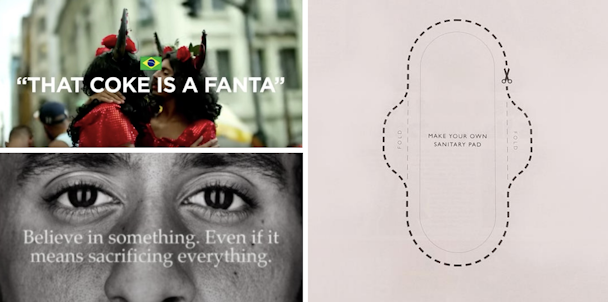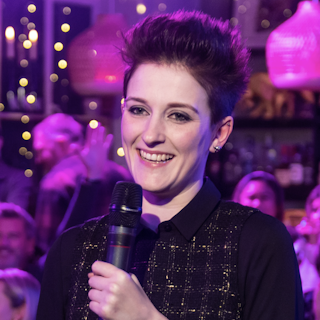5 social good campaigns you shouldn't have missed
Powerful messages can help a brand to stand out. When it comes to social good campaigns, championing a good cause will certainly put the spotlight on your brand.

5 social good campaigns you shouldn't have missed
Whether agencies and brands are creating campaigns because it helps profit margins or they actually care about the issues they front, 2018 has produced some of the most innovative social good campaigns yet.
We speak to five industry experts from Shelter UK, JWT London, The Good Agency, Oberland and the Direct Line Group on what they believe have been the most powerful campaigns this year.
The Pad Ad by Adam and Eve and Hey Girls
Reuben Turner, creative partner, GoodAgency
You can’t just rely on a campaign to achieve social good – you have to look at what your brand does, as well as what it says. That’s why Hey Girls is so spot on. It’s a new subscription product that offers women easy access to sanitary products (tampons and pads) – perfectly timed. But it’s also built on a ‘buy one, give one’ model that helps the millions of women and girls living in period poverty – unable to afford tampons and pads and so missing out on school, work and life. This couldn't be better timed, offering social good without compromising on convenience or desirability.
And the launch campaign, which used the front cover of the Metro to demonstrate what it might me like to have to use newspaper instead of a sanitary pad, was a perfect meeting of media and message. Authentic, honest and perfectly toned. This brand deserves to do well – and the better it does, the better for women everywhere.
This Coke is Fanta by David The Agency and Coca-Cola
Helen Jones, creative director, Shelter UK
When a big brand does a social good campaign the public can often be cynical. It can backfire badly when it feels forced or tagged on. So when a brand as big as Coca-Cola tries to tackle homophobia in Brazil, it needs to get it right. And boy did they get it right.
Apparently, “this Coke’s a Fanta” is a common insult used to describe gay men in the South American country. So in support of international LGBT+ pride day, Coca-Cola launched a limited-edition can of Coke full of Fanta with the message ‘This Coke is a Fanta. So what?’ and managed to turn this insult into a strong anti-homophobia campaign. The LGBT community loved it and wholly embraced it, successfully turning a derogatory phrase into one of pride.
What I love about this idea is that Coca-Cola didn’t try and just attach their name to someone else’s cause or campaign, they created one that only they could have done. They didn't just put their product at the heart of the campaign - the product was their campaign. It was brave, it was simple and it felt honest - which is a hard thing to pull off when you're a big brand vying for attention in a very busy social good landscape.
Dyslexic Sperm Bank by Y&R London and Made By Dyslexia
Mark Evans, marketing director, Direct Line Group
Made by Dyslexia’s 'Dyslexic Sperm Bank' is a highly arresting and intelligent piece of communication that tackles an important and often misunderstood issue. It’s peak point is where someone is asked if they would like a Dyslexic baby, to which they reply “I wouldn't kill it!”.
Typically Dyslexia is seen as a disadvantage and it certainly can create challenges as a result of traditional methods used in schooling and recruitment. Despite this, it also often gives individuals incredible strengths, akin to “superpowers” in areas of creativity and innovation.
Astonishingly, until very recently people with Dyslexia were not permitted to donate their sperm. This campaign turns that on its head by creating a pop-up sperm bank exclusively for people with Dyslexia. By drawing attention to the amazing entrepreneurs and innovators that have or had Dyslexia, including Albert Einstein and Steve Jobs, the campaign brilliantly conveys that we need to turn conventional thinking on its head and appreciate that Dyslexia can actually be an advantage.
The film itself evokes curiosity and surprise while delivering the killer stat that 40% of self-made millionaires are Dyslexic - who’d have thought!?
Trash Isle by AMV BBDO and Ladbible
Jo Wallace, creative director, JWT London
How many creatives can say they’ve created a whole new state, designed a flag, issued passports and made Dame Judi Dench queen?
Only two actually: Almeida and Hughes, the creatives behind ‘Trash Isles’.
They took rules and regulations and subverted them in order to raise a serious issue in a light-hearted way. They made us look at the huge amount of plastic pollution in the oceans in an entirely different way. As a new state, the Trash Isles.
But it’s cleverer than that. They didn’t only create a country out of that floating plastic to highlight the colossal size of the issue, they did it to ensure other countries had to do something about it.
The Rio Declaration on Environment and Development states that countries have a collective responsibility to help conserve and restore the environment. Almeida and Hughes realised that if all the plastic in the sea was declared an official country, other countries would be obligated to clean it up.
Genius.
They ensured the Trash Isles met all requirements to become an official state and even made former US vice-president Al Gore the first honorary citizen.
It worked. At a recent UN conference 193 countries pledged to tackle the global crisis of plastic in the oceans.
It’s (bloody) good work doing good.
Dream Crazy by Wieden and Kennedy and Nike
Bill Oberlander, co founder and executive creative director, Oberland
Since the arrival of Donald Trump in U.S. politics, racial tensions have soared. According to the Southern Poverty Law Center, hate crime was up 12.5 percent in 2017. When Nike decided to feature former San Francisco 49ers quarterback Colin Kaepernick in “Dream Crazy” during the NFL’s season opener Sept. 6, 2018, it was a risky endeavor. While blasted for taking a knee during the playing of the national anthem, Nike bravely embraced Kaepernick’s very public call-to-action to believe in something, even if it means sacrificing everything.
Supporting Kaepernick’s protest of racial injustice was a very needed public nod to the American ideal of free speech and our First Amendment. It was a courageous act of social good that paid off big for the brand via free media and a sales spike of 31 percent following the launch of the campaign, per Edison Trends. Kudos to Nike for also donating to Kaepernick’s Know Your Rights charity that teaches blacks about self-empowerment and provides life-saving instruction on interacting with law enforcement. By taking a knee, Kaepernick stood above the rest. So did Nike, which risked everything to honor his ideals and integrity.
Turner, Jones, Evans, Wallace and Oberlander are all judges on The Drum Social Purpose Awards 2018 panel. Judging is well underway and finalists will be announced on 14 November, 3pm.

